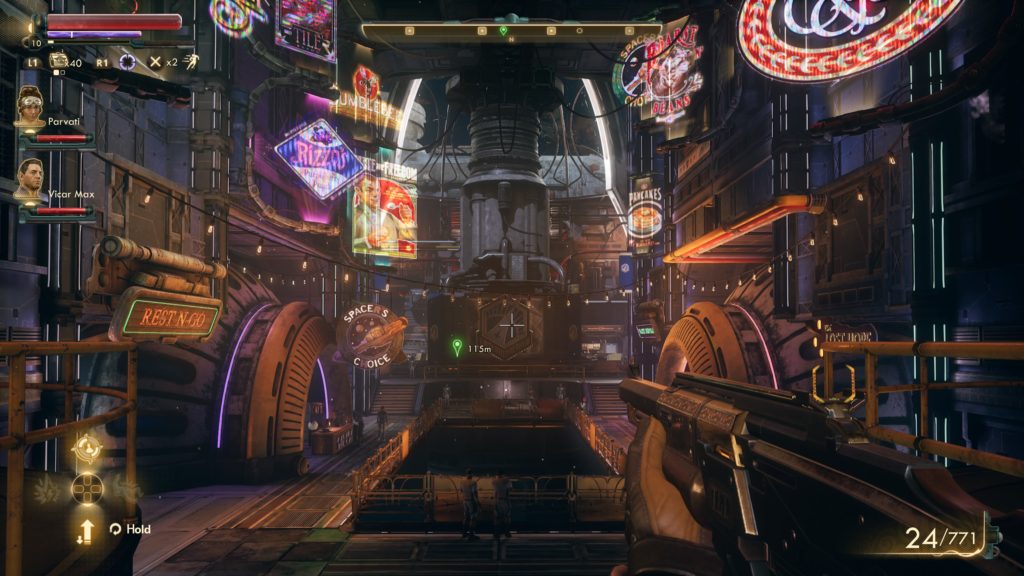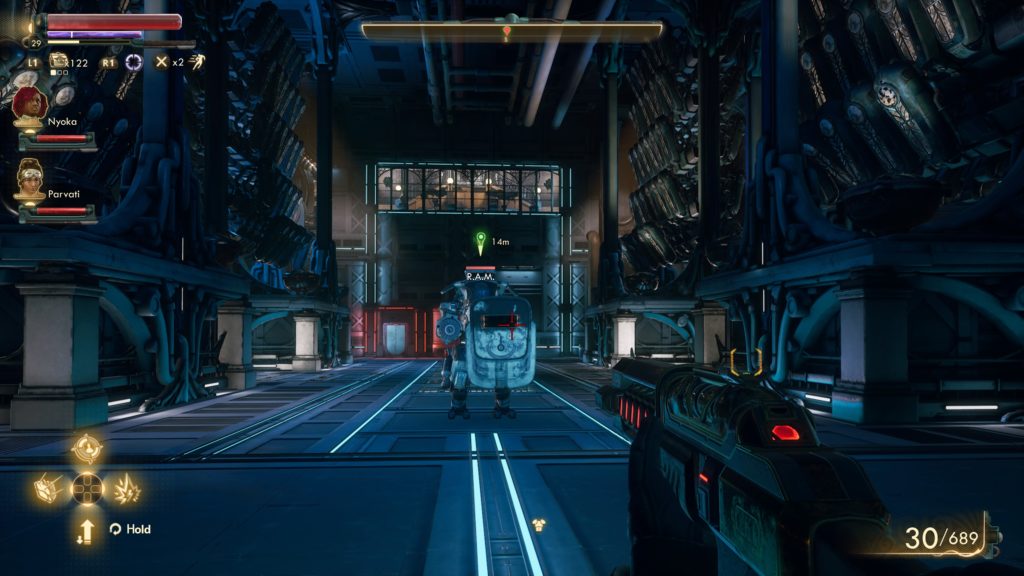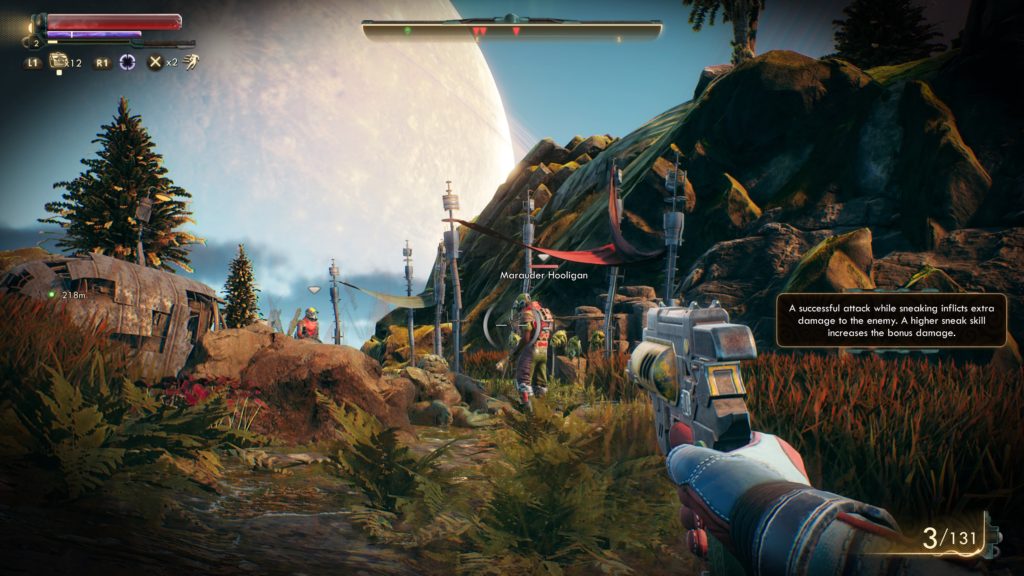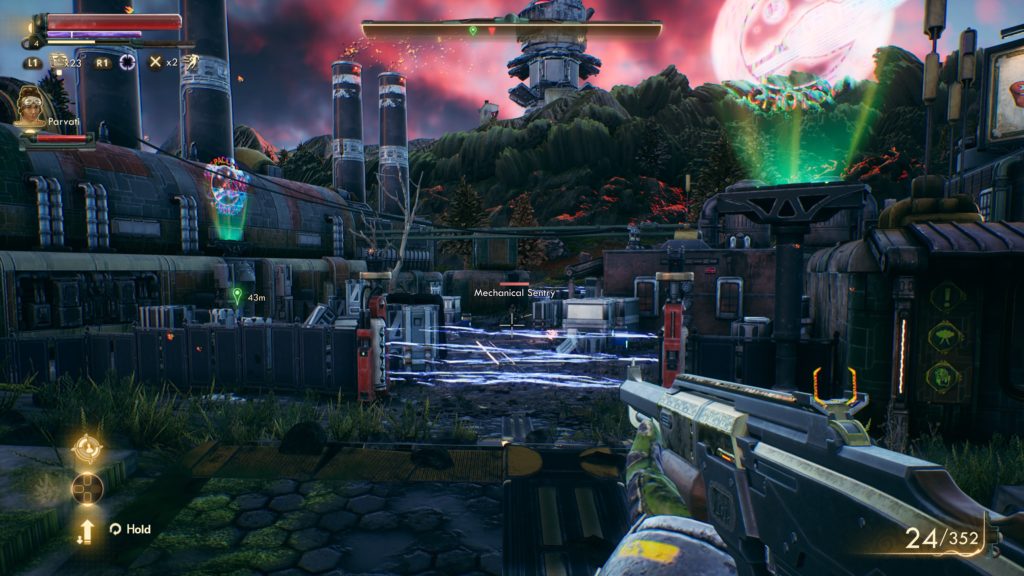More Info from Obsidian Entertainment
- Genre: FPS / ARPG
- Platform: PS4
- Also Available On: Xbox One, Windows, Switch
I’m not a huge fan of the recent Fallout games, so it may seem weird that I decided to play the spiritual followup to New Vegas. However, it was never the world or story I had a problem with. It was entirely the shooting mechanics. The Outer Worlds from the outside seemed like it was at least attempting to play more like a typical shooter that has RPG mechanics, rather than an RPG that uses guns. This definitely leans closer to a game I can enjoy, but it’s not without its mechanical issues that knock it down a few notches.

The first-person Fallout games never really made sense to play without using the VATS system. The straight shooting mechanics were pretty garbage, and leaned heavily on stats in ways not typical of FPS games, while the VATS system provided a much more accurate way of figuring out your chance of hitting things without having to deal with aiming. The Outer Worlds on the other hand is very distinctly an FPS with RPG wrapping. Shooting is much more of the core experience, with only a bit of an ability to slow down time for limited periods to help with aiming. In that regard, this is definitely a much smoother shooting experience.
However, that’s not to say that I found it to be a mechanically good FPS, especially with respect to playing it on console. At a base level the weapons generally feel kind of lifeless in a lot of respects, with pretty weak recoil and camera shake. As an example, the difference between high damage pistols and rifles or mid damage automatics is pretty irrelevant, so I tended to just go for highest single-shot damage and spam fire since I wasn’t going to deal with a typical single-shot high damage doom recoil.

On a gamepad, the feature set there was even more disappointing. They have the typical trappings of a gamepad shooter with some amount of aim acceleration, target adhesion, etc. However, it pretty uniformly felt like the activation range of gamepad aim assist features was significantly below the functional range of the weapons I was choosing, and also well closer to enemies than I wanted to play in the style I chose. The result of this was that it felt more like playing a pre-Halo console FPS, where I was just tapping the camera stick to get close enough to use strafing to finalize my aim and guarantee hits. Compared to the high-end of console FPS, it just felt like the features were a secondary thing that hadn’t been put through much testing.
This all kind of came to a head in the general player UX. It was more often than not that I didn’t really realize I was dying or nearly dead until it was too late. I’d be trying to effectively aim at things beyond the assist range while depending on my team to prevent flanking. They would occasionally get killed, allowing enemies to flank and kill me. The big issue throughout all of that is that it was never that obvious that either my team or myself were dead or dying. The UI elements for health are small and packed in the corner, so they’re out of focus. Damage indicators at least to me weren’t in your face, up until the point where I was at very low health, which typically was too late. The aiming issues combined with that were the leading cause of death for me, and it was generally a frustration point because it felt entirely preventable on both accounts.
That said, the rest of the game was generally of the style that I really wanted it to be.

The core progression of the game is a series of quests that take you around to small hub worlds. Each world has its own set of side quests to do, factions to help or hurt, and secrets to find. Blowing straight through the storyline would have been a quick affair, but there’s so much to miss just doing that. The side quest lines that you get involved in all have fun storylines to run through, with their own entertaining set of people to meet. In a lot of ways, this felt more similar to Mass Effect than to Fallout to me, where the main story would get me to a planet, but then I’d get lost in the local story for a while until I later got back on track. Generally speaking, if a game has me playing the side quests for the sake of them being fun rather than for needing the rewards, then I’m pretty happy with the end result.
This is all helped by a visual style that is distinctly not Fallout. This is a supremely colorful game, which is both a blessing and a curse. You’ll never mistake this for a brown post-apocalypse setting. While this is a lot of fun to look at in isolation, it’s also exceedingly busy. While this isn’t usually a problem, I did lose enemies in the visuals from time to time, especially on the smaller end of things. That said, I much prefer visual brightness and loudness to the drab wasteland of the Fallout series, so I’ll take losing some silhouettes from time to time as the downside.
The rest of the RPG trappings are also a lot of fun. There’s a ton of variety to build out with regard to your stats and inventory. Of note for me was my ability to build out what ended up becoming basically a lockpick master. I leaned heavily into increasing stats in 3 main areas – long guns for offense, lockpicking for crates, and hacking for electronics. In doing so, I was able to break into almost anything that was locked. This allowed me to make up for my deficiency on the defensive side of things by having a much larger ammunition and weapon upgrade pool to choose from than I’d otherwise have typically had. It’s this kind of customization that brings me to play more western-style RPGs, where mechanically they’re often otherwise kind of slow and clunky. The customization on top of being more action-leaning did a lot to keep me playing this one until the end.

This one is curious, and definitely shows some growth for Obsidian now that they’re disconnected from the Fallout IP. Ya their shooting mechanics aren’t the best, but they’re distinctly a step in the right direction. The rest of what’s there feels like what made New Vegas work to begin with. Good writing, good RPG underpinnings, fun characters, and an entertaining world. With the budget of Microsoft behind them and some time bringing their FPS mechanics towards industry-leading this could be a special series.
